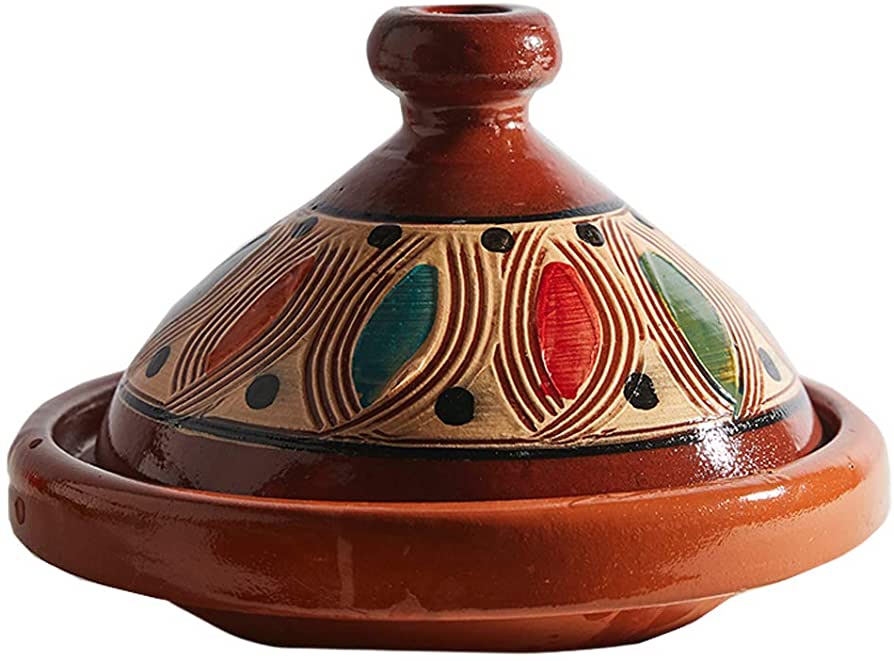Tagine is a traditional Moroccan dish that is popular in North Africa. It is made using a special clay pot with a cone-shaped lid, allowing for slow and gentle cooking that results in a flavorful and aromatic meal. The Berber people of North Africa have been using tagines for centuries to prepare their meals, and the dish can be made with a variety of ingredients such as meat, vegetables, spices, fruits, and olives. To make your own Moroccan tagine at home, soak the tagine pot, layer the ingredients, simmer slowly over several hours, and season to taste.
The History and Culture Behind Traditional Moroccan Tagine
Introduction
Tagine is a popular dish in North Africa, particularly in Morocco. It is a traditional Moroccan dish prepared using a special clay pot with a cone-shaped lid. The cooking method is slow and gentle, allowing the flavors of the ingredients to mix and blend, resulting in a delicious and aromatic meal.
The History of Tagine
The tagine pot takes its name from the dish it is used to cook, which has a long history that dates back to ancient times. The Berber people of North Africa, who are indigenous to the region, have used tagines for centuries to prepare their meals.
The tagine’s design and function are unique, and its shape plays a vital role in the cooking process. The cone-shaped lid allows steam to circulate within the pot, creating a moist and tender meal.
Tagine dishes were traditionally cooked over an open fire, but modern stovetops and ovens have replaced this method. Nevertheless, the cooking technique remains largely the same – slow, gentle, and with the utmost care.
The Ingredients Used in Tagine
Tagine recipes vary widely, depending on the region, ingredient availability, and personal taste. However, there are several essential ingredients that are common in Moroccan tagine recipes:
The Cooking Method of Tagine
Tagine is cooked using a clay pot with a cone-shaped lid. Before cooking, the tagine pot should be soaked in water for at least 30 minutes, helping to keep the food moist while cooking.
The ingredients are then placed in the pot in layers, with meat and vegetables placed at the bottom and dried fruits and spices added on top. Water or broth is added, and the tagine is covered with the cone-shaped lid.
The pot is then placed on a stove or oven, and the heat is gradually increased until the dish reaches a slow simmer. The dish is then cooked slowly over several hours, allowing the flavors to blend and intensify.
Tagine Recipe
To make your own Moroccan tagine, you will need:
1. Soak the tagine pot in water for at least 30 minutes.
2. Heat the olive oil in the tagine pot over medium-high heat.
3. Add the meat and brown on all sides, then remove from the pot.
4. Add the onions and garlic, and sauté until tender.
5. Add the carrots and potatoes, and continue to cook for 5 minutes.
6. Add the tomatoes, olives, and apricots, and stir to combine.
7. Add the cumin, coriander, ginger, cinnamon, turmeric, salt, and pepper, and stir to combine.
8. Return the meat to the pot, and pour in the beef broth.
9. Place the tagine on a stove, and bring it to a simmer over medium heat.
10. Reduce the heat to low, cover the tagine with the cone-shaped lid, and let the dish cook for 2-3 hours, stirring occasionally.
11. Remove the lid, and continue to cook for another 30-45 minutes to thicken the sauce. Season to taste.
Conclusion
Try making a Moroccan tagine at home and discover the rich, aromatic flavors that make this dish a favorite in Moroccan cuisine. The traditional tagine pot and cooking method will surely add an authentic feel to your cooking experience. With a few simple ingredients and some patience, you can create an impressive and delicious meal!
